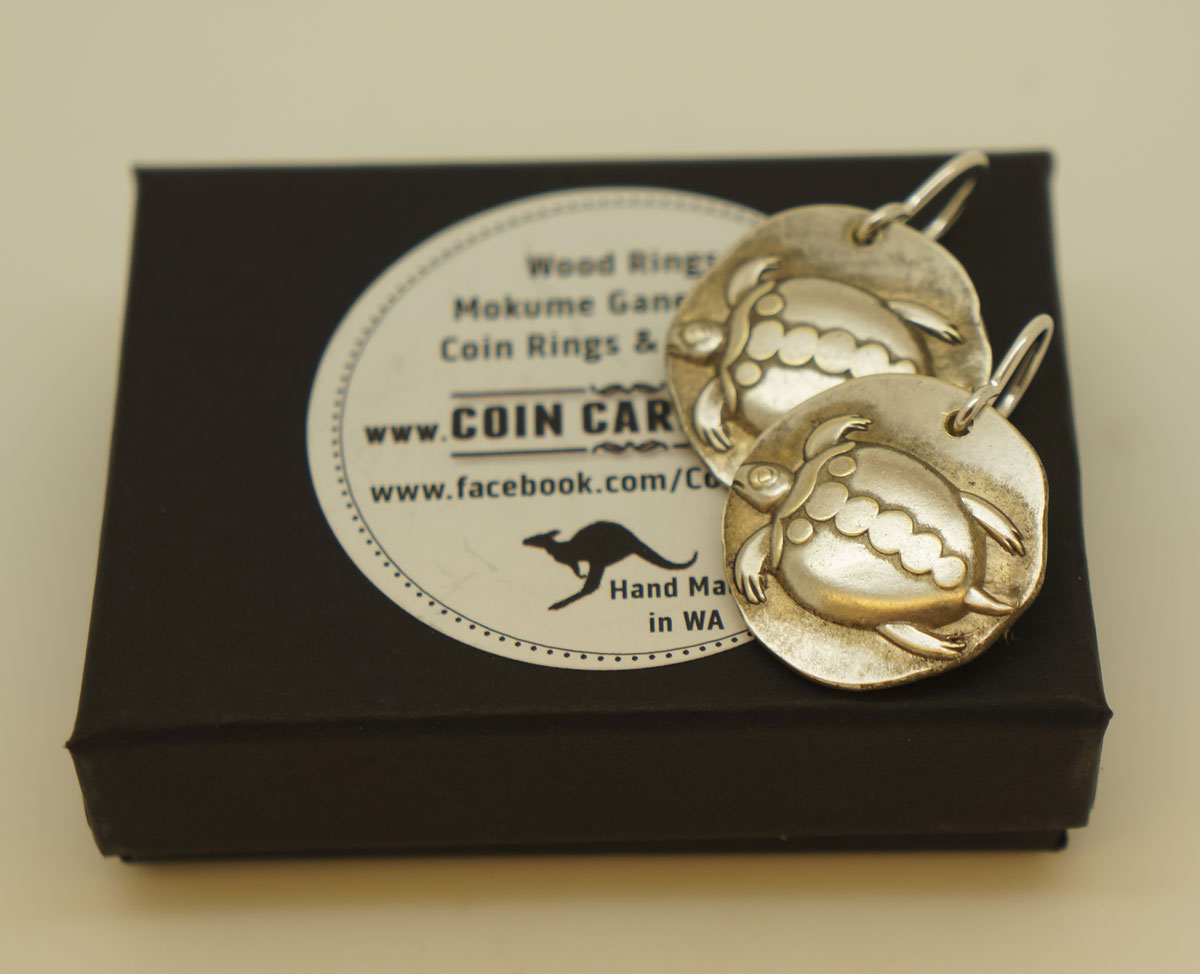
Aegina Sea Turtles earrings by Coin Carnival
Very interesting history behind those Sea Turtles coins. The coins I use are the re-strike sand silver plated (they are not original coins however I can use original coins if you wish but you have to provide them … hmm at an average $1500 USD per coin maybe it is better to stick to my silver plated re-strikes).
Aegina Sea Turtles
Aegina, an island 30 km (about 20 miles) southwest of Athens, was the first Greek city to mass-produce silver coinage, possibly as early as 580 BCE.
These coins bore the city’s badge: a sea turtle.
Aegina traded in silver long before the invention of coinage, and one theory is that the turtle was chosen because primitive silver ingots had a rounded “turtle-back” shape. Trace element analysis indicates that the silver came from mines on the island of Sifnos (or Siphnos), about 130 km (80 miles) to the southeast.
The “Aeginetan” weight standard included a didrachm or stater of 12.2 grams, a drachmaof 6.1 grams, a hemidrachm or triobol of about three grams and an obol of one gram. The staters are the most common, and have been found in hoards and single finds across the ancient world, often heavily worn from circulation, slashed with test cuts and pocked with “banker’s marks” (small punches that probably validated a coin as “good” in a particular marketplace).
The reverse of the coins bear a variety of geometric punch-marks: a “Union Jack” (a rectangle with intersecting lines resembling the pattern of the British flag), a “mill sail” (four triangles arranged like the sails of a windmill), and a “skew” (a cross with one diagonal line from the center).
Aegina Land Tortoises
Athens and Aegina were commercial and political rivals. In 456 BCE, Athens forced Aegina to pay an annual tribute of 30 talents. About 25 years later, Athens exiled the Aeginetans, replacing them with Athenian colonists. In 404 the surviving exiles were allowed to return, but Aegina never recovered its power or prosperity.
At some point in the fifth century BCE, the land tortoise replaced the sea turtle on the obverse of Aegina’s coinage.
Numismatists once considered this a symbolic reflection of Aegina’s loss of naval power, but this is now considered improbable. Most of the tortoise types seem to date from the period 350-338 BCE, but there are examples that seem to be from much earlier dates.





